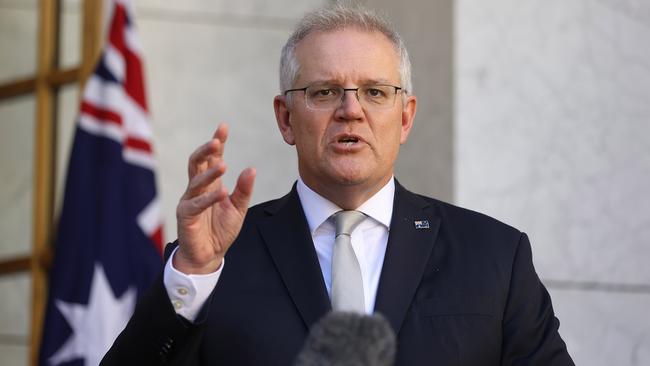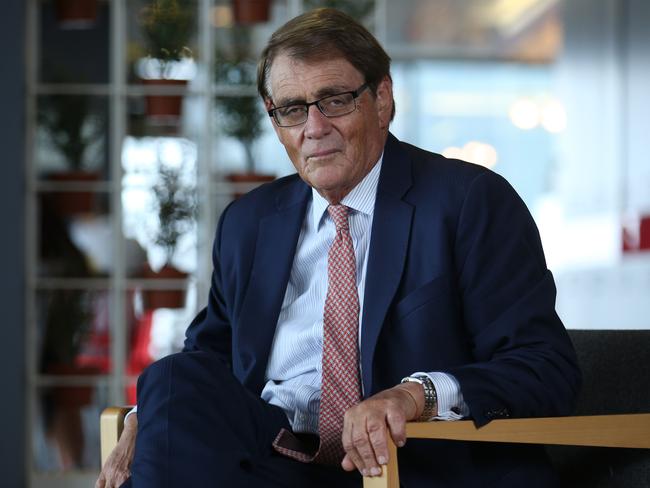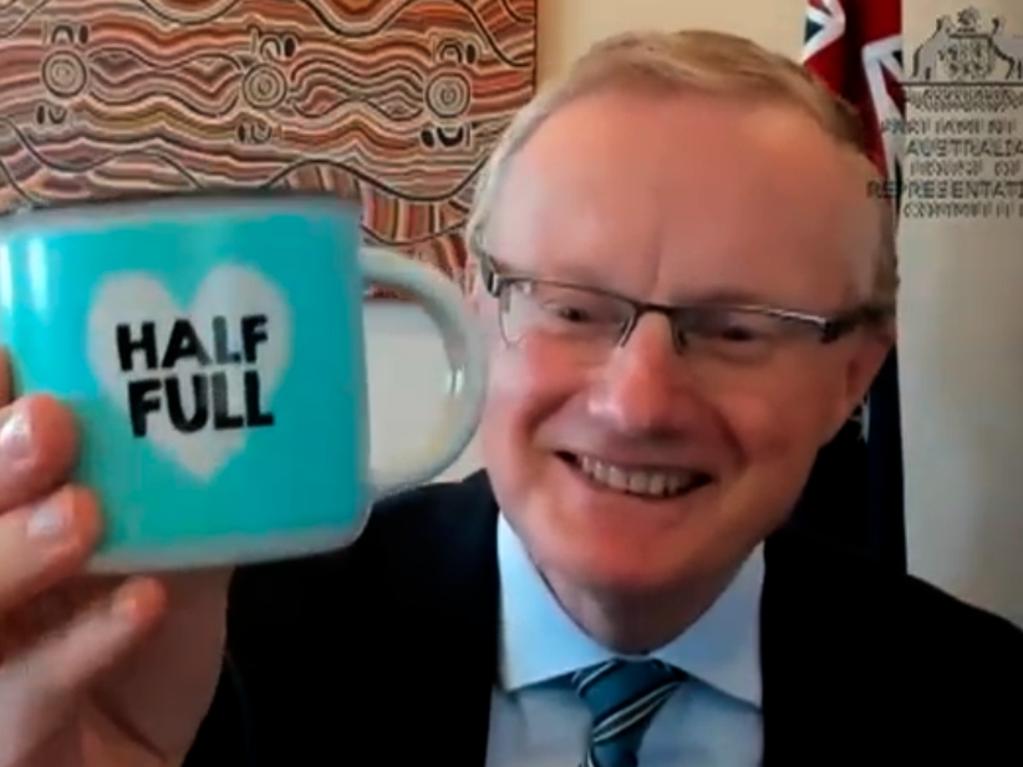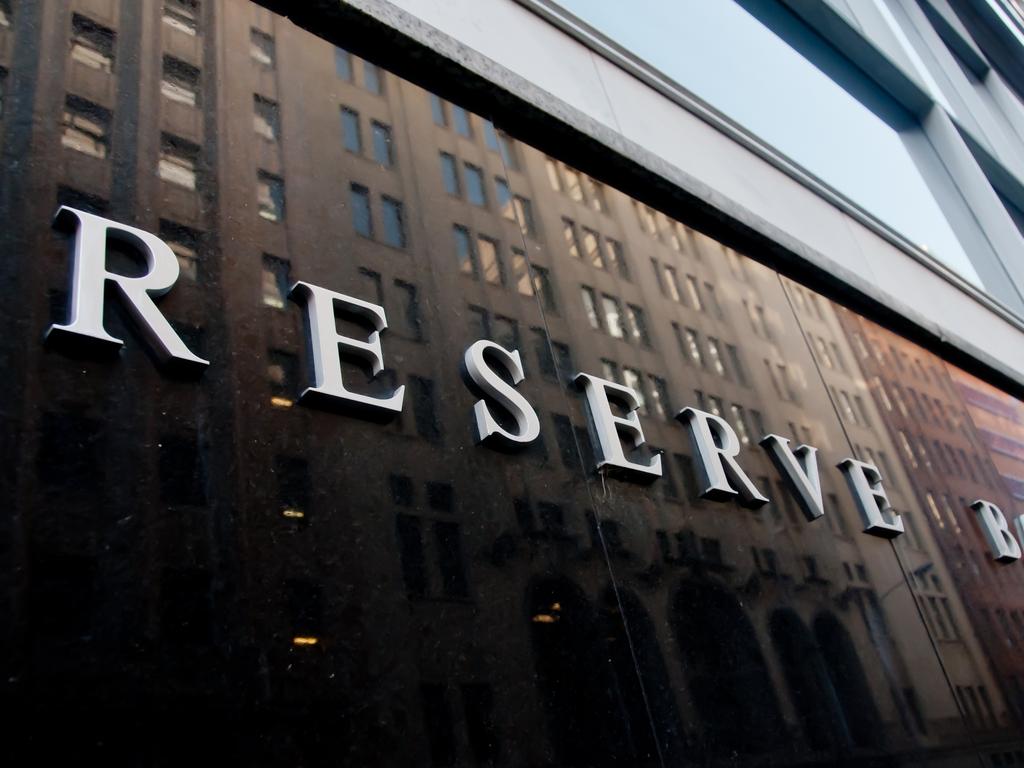Lockdowns could push the economy into a downward spiral even as we learn to live with Covid
Covid-19 will surge across the country, hitting the economy as state restrictions strangle household spending, investment and jobs.

New Covid-19 cases will surge across the nation when an 80 per cent fully vaccinated NSW exits lockdown in November, leading to an erratic economic revival that could extend into the coming federal election campaign.
CBA’s head of Australian economics, Gareth Aird, says over a three to six-month period post- lockdowns, as the nation adapts to living with the virus, more targeted fiscal support will be required to keep businesses afloat.
“It will simply be a matter of time before the virus is rampant across the entire country,” Mr Aird said. “For the first time Australia will experience ‘living with Covid’. This is likely to mean that there will be a significant period of adjustment for households and businesses as the virus circulates within the community in large numbers and hospitalisations rise. It will mean that the economic recovery, at least initially, is a bumpy ride.”

A federal election is due by May. Scott Morrison said on Wednesday he was optimistic about the nation’s ability to avert a double-dip recession. The Prime Minister said the economy would recover quickly as long as 70-80 per cent of Australians were fully inoculated and “we open up the country”.
“Once you are able to release these restrictions, then we see the economy come back very, very, very strongly,” he said.
But Australia’s economy has hit a pothole and may not recapture its pre-Delta velocity until well into next year.
Employers claim the nation is at a tipping point, with AI Group chief executive Innes Willox saying state government restrictions are “strangling what is left of business confidence and are likely to push Australia back into recession”.
Midway through the September quarter, the recovery is losing traction as major projects are stalled, companies shelve investment plans and hiring, workers stay idle at home, and consumers wind back spending.
According to private sector economists who are adjusting their views in light of Victoria’s stricter lockdown, GDP this quarter is likely to shrink by as much as 3 per cent, which is like losing the entire contribution to activity from Tasmania and the Northern Territory.
More tourism and hospitality businesses are set to fail and perhaps a further 300,000 jobs will be lost.

Westpac chief economist Bill Evans sees a “sharp deterioration” in activity over coming months and has slashed his growth forecast for this year from 3.2 per cent to 2.4 per cent, or $16bn in output.
Tracking hours of work, Mr Evans says the NSW economy will shrink by 8.3 per cent this quarter based on the current statewide lockdown lasting until the end of October.
The shocks from NSW extend to supply chains across industries and will lead to lower spending in every corner of the country.
CBA’s Mr Aird said “the economic reopening, particularly in NSW, will be very different to exiting previous lockdowns”.
“In short, we anticipate an uneven reopening of the economy, which means it will take time for economic momentum to build again,” he said.
CBA sees a difficult path ahead, with the unemployment rate rising to 5.7 per cent in coming months from 4.9 per cent in June. Mr Aird said it would take 12 months for the jobless rate to return to its pre-Delta level.
According to the Transport and Tourism Forum, the number of direct and indirect jobs lost to the industry during the pandemic is estimated to be 610,000 by next month. The TTF estimates it lost $5.8bn in revenue during the July school holidays and expects similar falls in the coming holidays.
Revenue from corporate travel is below its levels a year ago. Managing director of Ascott Australia, David Mansfield, said occupancy rates had dropped 30 per cent across the 135 properties the company has nationally in CBDs, suburbs and towns under the Quest apartments franchise. At this time of year occupancy in NSW and Victoria is usually at 75 per cent.
“It’s not diabolical but those rates of 40 per cent (NSW) and 45 per cent (Victoria) are comforting in that it’s not at 20 per cent,” Mr Mansfield said. “What’s changed in the last two months is that regional properties are feeling the pain now. Our business owners/franchisees and landlords are bearing the brunt of this situation and just trying to survive.”
Restrictions on construction will lead to a sharper downturn than previously expected. Brickworks, the nation’s leading maker of bricks, has halted production at two kilns in NSW, accounting for 30 per cent of output after demand plummeted by 80 per cent due to curbs on construction.
Deloitte Access economics partner Stephen Smith says ongoing lockdowns “can be kryptonite for investment, and unfortunately that is now coming to pass”. In the March quarter, business investment was 11 per cent of GDP, a 30-year low.
“The restrictions in Sydney, Melbourne and Canberra are putting a stop to current investment activity and are weighing heavily on future plans,” said Mr Smith, who is the principal author of Deloitte’s quarterly Investment Monitor. “Investment is a bet on the future, and the uncertain length of the lockdowns means an uncertain future. This was meant to be a time of recovery, but we are at risk of seeing business investment spending go backwards in the second half of 2021.”
According to the Reserve Bank, the pace of government infrastructure spending has been slower than expected. Information from the RBA’s liaison program suggests the rollout of large investment programs may be delayed further, with reports of administrative challenges in awarding contracts and constraints on the availability of materials, equipment and labour.
CBA senior economist Kristina Clifton says the medium-term outlook for public capital works appears good on paper, with $113bn of projected spending this financial year. But Ms Clifton says there is a risk some projects will be delayed because of lockdowns and skill shortages stemming from border closures.
“Rising materials prices could see the costs of some projects blow out or be delayed,” she said.
ANZ Bank economists believe there will be businesses casualties among those facing extended shutdowns.
“Some sectors, particularly tourism, arts and recreation and hospitality, will struggle, especially given their limited ability for catch-up spending,” ANZ economists said in a note to clients.
What worked last year to keep retail rolling is unlikely to help this time, with surveys of buyer intentions showing a spending pause.
Data from ANZ shows spending in Sydney was similar to last year’s lows and down 27 per cent last week from its level before this lockdown; Melbourne’s spending slumped by 33 per cent.
ANZ senior economist Adelaide Timbrell said “unlike last year, lockdown spending losses have not been offset by mass spending on the transition to remote work”.
“Spending on electronics and home-related items have been more modest in 2021 compared with last year,” Ms Timbrell said.
After a monster sales performance last year, retailer JB Hi-Fi reported this week that same-store sales had slumped 15 per cent in the first two months of the new financial year, as lockdowns took a toll on consumer spending.
As well, spending on homewares and furniture, and travel and movement, are trending lower than last year’s lows.
Economists are expecting federal and state fiscal support to continue over coming months. As of this week, $3bn had been distributed by Canberra in pandemic response payments to 1.42 million people.






To join the conversation, please log in. Don't have an account? Register
Join the conversation, you are commenting as Logout